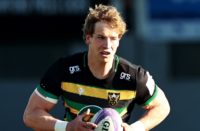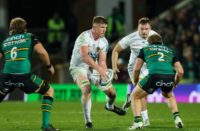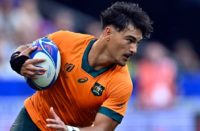SUE Dorrington says the more doors that were slammed in her face, the more determined it made her to put on the first Women's World Cup even though she admits her organising committee didn't have a clue what they were doing.
The Netherlands were due to host the tournament but plans fell apart leaving charity consultant Dorrington and her committee to take the reins despite no help from the IRB or, initially, the RFU.
“We were very naive and very young, the story we tell and the story we stick to is we didn't know what we were doing,” Dorrington tells The Rugby Paper.
“We were naively getting on with it because it was something we needed to do for the women's game. We were ready for that platform and an international stage.
“We just ploughed on, and there were not any obstacles that were going to stop us. To be honest, we were thrown out of everywhere, and the IRB didn't want anything to do with it.
“Every door was shut in our faces, but we just persevered with lots of tenacity. There was no stopping us, we started something, and we were going to finish it.”
After the tournament, Dorrington and her fellow organisers Deborah Griffin, Alice Cooper and Mary Forsyth were left to personally balance the books. It looked like they would have to dig deep and find between £25,000 and £30,000 until they were summoned to a meeting with RFU secretary Dudley Wood.
Fearing they were for the high jump, instead Wood turned out to be the knight in shining armour they had been looking for before the tournament.
Wood, who spent a decade in the Twickenham hot-seat dragging the RFU into the 21st century, simply wrote them a cheque to allow them to balance the books.
Dorrington adds: “Once we got to the tournament, we were so caught up in delivering it. We had a really good financial manager with us and had forecasted break-even to profit. And it was only some really unfortunate things that happened post the final whistle that brought us into the red.
“The Russians trashed their hotel, so we had to pick up that bill, and then the sponsorship consultancy that worked with us, who didn't get us any money, whacked in a huge bill.
“I remember we were summoned to Twickenham and we thought that we would get our knuckles wrapped. But Dudley was incredible. He pulled out his cheque book and balanced the books.”
IT took World Rugby almost two decades to officially recognise the 1991 Women's World Cup, and even then, without any fanfare. Instead, the then IRB acknowledged the event as the first-ever women's World Cup in 2009 by simply publishing a list of previous winners in a Press release to announce bidding for the 2014 tournament.
So with no help whatsoever from the IRB, the 1991 World Cup was organised by four women connected with Richmond Rugby Club: Deborah Griffin, Sue Dorrington, Alice Cooper and Mary Forsyth. Against the odds they managed to stage a 12-nation tournament in Wales, 15 games in eight days, with the United States defeating England 19-6 in the final.
The players, who were all amateur, took time off work to play and received no funding – the Russian team even took to selling vodka and caviar so they could afford to eat.
Thirty years on, American-born organiser and player Dorrington recalls the mighty effort to get the event staged – and the journey to the final. “All the teams were on a very tight schedule; nobody could afford it,” Dorrington says. “They all had to come in and then get out. There were no sponsors, no help from the Unions. We had two weeks off to play and we had to go straight back to work.
“So it was quite an incredible experience. And it was quite a pounding schedule, so if you weren't fit, you really did suffer.”
England centre Sam Robson organised the merchandise for the tournament from her flat in North East London, which she took down to Wales in the back of her car.
Robson says: “I ordered stuff from a supplier and said, ‘if we run out, I need you to do a really swift order', and I am going to nip up from Wales. And that's exactly what happened. In the middle of the tournament, I drove in my little Peugeot 205 to Ealing to pick up this stuff and rushed back again so we could sell a bit more of it.”
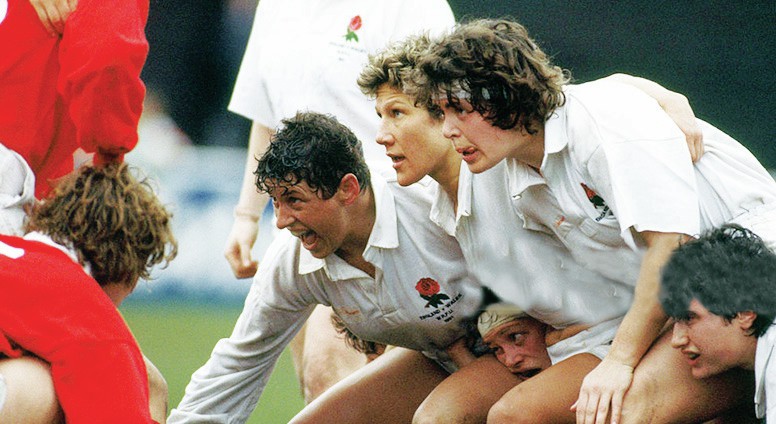
One of the tournament favourites, England, opened up with a 12-0 win over tough-tackling Spain thanks to tries from Cheryl Stennett and Claire Williets. “In that Spain game, the weather was absolutely atrocious,” adds Robson, “playing in the backs, we were freezing. It was one of those forwards rolling maul type of games. When we got off the pitch, I remember one of the girls going straight into the shower in all her kit because she was too cold to take it off.
“I know it's Wales in April, but it was terrible. I have to say that it got slightly better after that.”
England booked their semi-final birth against France after recovering from 9-4 down at half-time to beat Italy 25-9 thanks to a Stennett hat-trick.
The French had not conceded a point in the run to the semi-final but were starved of the ball and couldn't get a touch in the first half. England won 13-0 with tries from Gill Burns and Debbie Francis on another cold night in Cardiff, with the forwards and hooker Dorrington, in particular, having a field day.
“It was incredible, we had never beaten France before,” says Dorrington. “I took great delight in absolutely trashing their hooker. I deliberately broke her and had her crying. I knew that when I mentally broke her, technically they would break down. I really worked at it. She just sobbed throughout the last quarter, and we beat them. We feared them so much, but we were so confident that we could beat them and get to the final.” Robson recalls that France, who had been a late call-up to the tournament, sprung a selection surprise just before kick-off that back-fired. “It was an odd game because they had a flanker who they decided the best tactic was for her to play in the centre,” says Robson. “She was a very skilled player, and she was huge compared to the average English player and probably weighed about four stone more than I did.
“The idea was to crash ball through us, and trying to contain her was a massive challenge for us in the centres. It was a radically different approach to what we had seen before, and for me, it was a personal victory that I had stopped this massive centre. We were having none of it.”
The United States, who had beaten another of the tournament favourites, New Zealand, 7-0 in their semi-final, contested the final with England two days later –a tough experience for Dorrington.“I started out with some of those women in the States and it was quite hard to see them on the pitch. I wasn't conflicted,I was definitely playing for England, but it was a weird setup. I was an American stood there signing God Save the Queen, and they were next door singing something else.
“But your heart is where the team is, and losing to them was a really hard pill to swallow.”.
England opened the scoring with a penalty try to go 6-0 ahead but could not capitalise with American brawn taking control of the game.
And three tries in 12 second-half minutes gave the Americans a 19-6 victory, which was used as motivation three years later when England gained revenge in the 1994 final.
Robson, who retired after the final, added: “The States had always been an incredibly strong team. They were always bigger, more athletic and had more experience in playing than us.
So we knew that they were always going to be a really athletic, wellorganised team.
“We had played France before, but we knew that America were going to be the biggest unknown in it. They were good at taking advantage of quick opportunities. They scored a quick soft try by taking the ball rapidly and catching us unaware.
“And I don't think we recovered from the shock of it, and we were on the back foot and in disarray. It was something that we hadn't really seen before, and we weren't quick enough in planning our response.”
WHERE ARE THEY NOW?
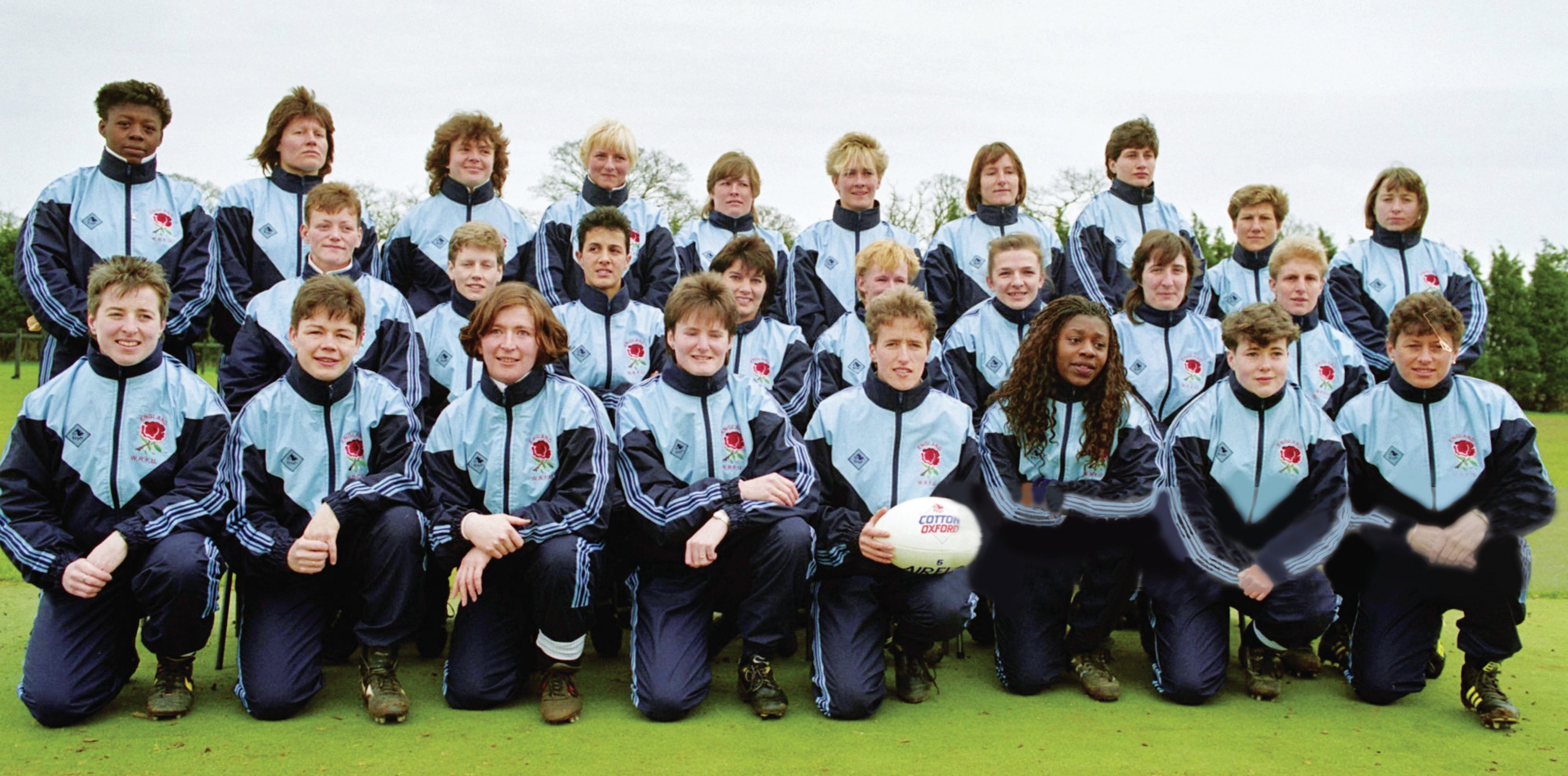
BACK ROW (from left):
Maxine Edwards: A prop who played for Bromley, Blackheath and Saracens and appeared at three World Cups. Worked as a business analyst before qualifying as a teacher.
Now based in Kent and is head of IT and computer science at a secondary school.
Jayne Watts: Richmond prop who was an outdoor instructor, moved to Scotland where she became a primary school teacher and is now living in retirement near Dundee.
Jane Mangham (now Coates): A loosehead prop who studied at John Moores Poly in Liverpool and played her club rugby for Waterloo. A housemate and a close friend of Gill Burns, has coached rugby in Scotland where she is now a teaching assistant in Edinburgh.
Claire Vyvyan Williets: Loughborough centre who is the sister-in-law of former England second row Hugh Vyvyan, worked in IT for ICI and is now a senior vice president UK & Ireland for DellEMC.
Nicky Ponsford: Waterloo prop played in England's first-ever Test match against Wales in Pontypool in 1987.
Spent 18 years with the RFU as head of women's performance, now on a two-year secondment with World Rugby.
Giselle Mather: Wasps fly-half, a World Cup winner in 1994, worked as PE teacher. Later the head coach of Teddington Rugby Club and then worked in the London Irish Academy. Is now Wasps Ladies DoR.
Pat Harris: A prop who played for Richmond, became a qualified physiotherapist and was the physio for England women's rugby team.She is now living in Newquay and is a senior physiotherapist for Care Cornwall.
Janis Ross: Flanker helped Emma Mitchell and Sam Robson form Saracens Women in 1989. A former rower now an artist.
Sue Dorrington: Richmond hooker hailed from the American mid-west and is now a special events consultant.
Emma Mitchell Saracens scrum-half played 52 times for England, worked in academic publishing for a clothing company in the United States. Now an executive coach and lifestyle practitioner with GB Sport.
MIDDLE ROW (from left): Heather Stirrup Wasps lock, who later managed the England women's team, moved to Canada, where she teaches at St. George's School in Vancouver.
Sally Cockerill Went to school in Cornwall and played county hockey before finding rugby. Played for Newport and Great Britain and worked as a community investment manager.
Cheryl Stennett Wasps winger became a school teacher and now lives in Cheltenham, where he is working for the Gloucester School Sports Network.
Debbie Francis Leeds University, Finchley and Richmond winger who also played for her native Scotland and Great Britain. Lives in Surrey and works as an IT manager. Her husband Mark is an experienced rugby coach.
Sam Robson Centre, who played for Loughborough, Saracens, Wasps and Great Britain, was a sports development officer.Worked in marketing for Waltham Forest Council and is now a director of TAG Global Events.
Gill Burns: No.8 who played for Waterloo. Spent 23 years teaching PE and maths at Range High School in Warrington. Has been president of the Lancashire RFU and is vice-chair at Firwood Waterloo. Has a company selling customised cushions.
Sarah Wenn: Wasps and Clifton lock who became a civil engineer spending nearly a decade with John Laing before 18 years working for Heathrow airport.Based in Kings Worthy near Winchester.
Jenny Chambers: Richmond flanker managed leisure centres before becoming a professional horticulturalist. Has been a lecturer at the Abingdon & Witney College and has managed the local community centre.
FRONT ROW (from left): Jane Mitchell Loughborough Collegeeducated full-back, twin sister of Emma. Also played for the USA and lives in California. Works as a senior business analyst for retailer Title Nine.
Carol Isherwood: Flanker set up Leeds University's women's team and was the first woman appointed to the IRB Rugby Committee.Worked in sports development and performance, has also been a regional manager for the FA and is now a sports consultant.
Mary Harrington: Richmond back row works as an engineer in the aviation industry for a company that makes ejector seats.
Ailish O'Kelly: Wasps winger turned to rugby from athletics where she was a sprinter and is now based in Hertfordshire, where she works as a PE teacher.
Karen Almond: Fly-half and captain, played for Loughborough Students, Wasps and Saracens, winning eight league titles. Settled as a teacher in New Zealand before moving to Perth, Western Australia.
Jacquie Edwards: Centre, the younger sister of Maxine, is now based in Whitstable as a PA to the director of sport at the University of Kent. Also an actor, model and singer known as Ginger Bennett.
Helen Harding: Scrumhalf who spent over 25 years playing for Wasps. A warranty controller before training as a teacher and is now teaching PE and rugby at St Helen's School in Northwood.
Sandy Ewing: A prop who played for Wasps, moved to New Zealand where she lives in Auckland and works as an IT consultant for the Fonterra Diary.
Val Blackett, not pictured: Clifton winger was part of the 1994 World Cup-winning side. Her current whereabouts are unknown by former teammates.


